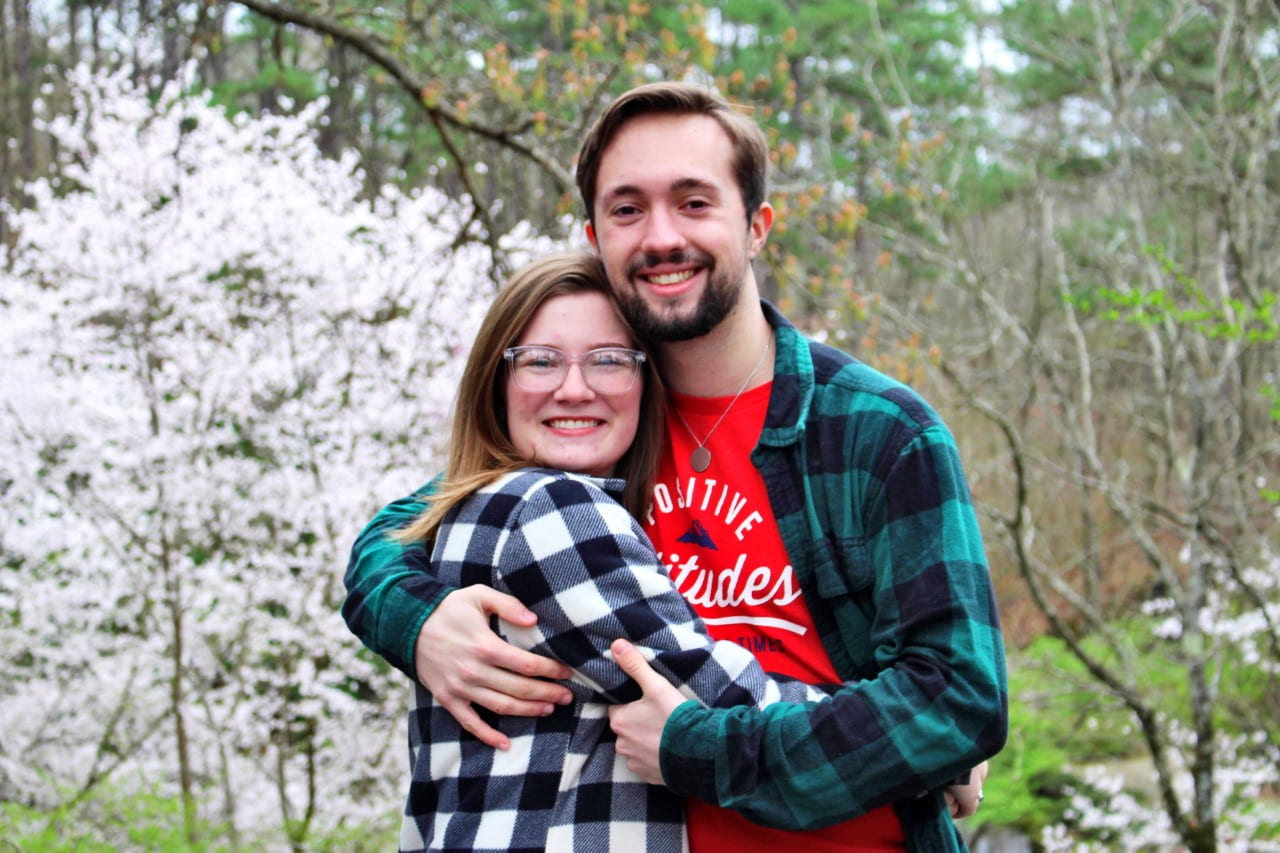Pictured above: An institutional service worker (ISA) with University Housing cleans a community bathroom in a residence hall. University Housing spent more than a million dollars during this academic year on enhanced cleaning to fight the spread of the COVID-19 pandemic.
Her boyfriend’s head felt hot to the touch. She suspected they might have COVID-19 but needed to be sure.
Freshman Alexandra Goad of Hot Springs and her boyfriend, Jason Long, left Pomfret Hall and went to a drive-thru testing facility in early September.
He tested positive and she tested negative, but they both entered quarantine to be safe.
“I never tested positive, but I know I had it. I had body aches and headaches every day. I was sick to my stomach,” Goad said about the next 14 days. “I was just so exhausted.”

Planning for a Pandemic
Goad and Long are among hundreds of on-campus students that University Housing set up in dedicated spaces away from other students during the fall semester.
Some of these spaces are dedicated to isolating students who have tested positive for COVID-19 and other spaces allow students who might have been exposed to quarantine away from other students until they are cleared by medical staff.
Setting aside these isolated spaces allows students to remain on campus in a safe space until they are no longer able to spread the infection.

Keeping students in a space away from others presents several challenges. One big one is how they will be fed.
In order to make this happen, University Housing worked with Chartwells Higher Ed, the campus dining provider, to deliver meals directly to students’ rooms.
In addition, mail, laundry and trash services were provided to students in quarantined rooms and administered by University Housing.
Then there were the little things like a student who needed a toothbrush or deodorant but could not go out of their room. University Housing took care of those needs for the typical two-week stay by bringing the item directly to the student’s room.
“It’s a tough situation and we just tried to help students remain focused on their health and on their academics,” said Shiloh Kaminski, assistant director for student outreach.
In addition, students received regular wellness checks to ensure they were doing well.
At the infection’s peak around Sept. 12, 163 students were being accommodated in these spaces at one time, said Alisha Gilbride, associate director for administrative services. It was an unprecedented effort that required housing leadership to set up an “incident command system” during the peak.
The incident command system is a structure designed by the federal government for emergency and rapid responses. University Housing uses the same structure during the move-in and move-out processes.
One subtle but important change is that University Housing spent more than a million dollars hiring supplemental staff to clean areas of high traffic more frequently and to expand community bathroom cleaning.
“Our staff had to design and carry out new methods of service very rapidly during this process. They did an amazing job serving the students who needed to be isolated or quarantined,” said Florence Johnson, assistant vice chancellor for University Housing.
Life in Quarantine
Goad lives in Pomfret Hall but works in the neighboring Adohi Creative Community on the south side of campus. So, she knew the building where she quarantined for two weeks.
She said the isolation of being alone in a room like that is tough, but she got into a rhythm soon enough. A great view of the soccer and baseball field helped her feel closer to the outside, she said.
She ordered food with a QR code and the food was brought to her room twice a day. She described herself as a picky eater who avoids gluten and dairy, but that dining services worked with her to find meals she could eat, sometimes giving double helpings in a meal when it was food she could eat.
“I wasn’t afraid to ask for a special order,” she said.
Laundry service was especially nice, she said. It arrived weekly wrapped, folded and cleaned.
“Things were really reasonable. I did feel like [Housing] cared about our condition.”
Postcards from Professors
Jim Hogan, Ph.D., is a biological safety officer at the university. He approached Housing’s academic engagement area about the idea of creating cards with well wishes from staff and faculty.
It was a great idea, said Stephanie Adams, Ed.D. She is the associate director for academic engagement who oversees the Adopt A Prof program that brings faculty into the residential environment with students.”
“I then reached out to all the Adopt a Profs to see how many would be willing and, after we got a positive response, we decided to get the cards,” she said.
Around ten faculty signed the cards and they’ve been distributed along with meals to students who are in quarantine or isolated.
“We know it’s hard on these students, so we want to send them a little encouragement as they wait to be cleared to return to normal residential living,” she said.

Returning to Life
Goad left her quarantine room at Adohi Hall on Sept. 25, eager to rejoin her boyfriend, friends and academic life.
She is a theater education major with numerous production credits to her name. In addition to her work at the Adohi Creative Community teaching students to use the laser printer, she works at Old Navy and teaches American Sign Language.
She said she has a passion for making things accessible to other people. One reason that she enjoys teaching American Sign Language to those interested in learning.
Goad’s brush with COVID-19 was rough. It included long days alone in a quarantined room, and frequent requests to friends to deliver fast food, but she felt safe and taken care of by university staff, she said.
“I didn’t seriously consider ever going home.”
